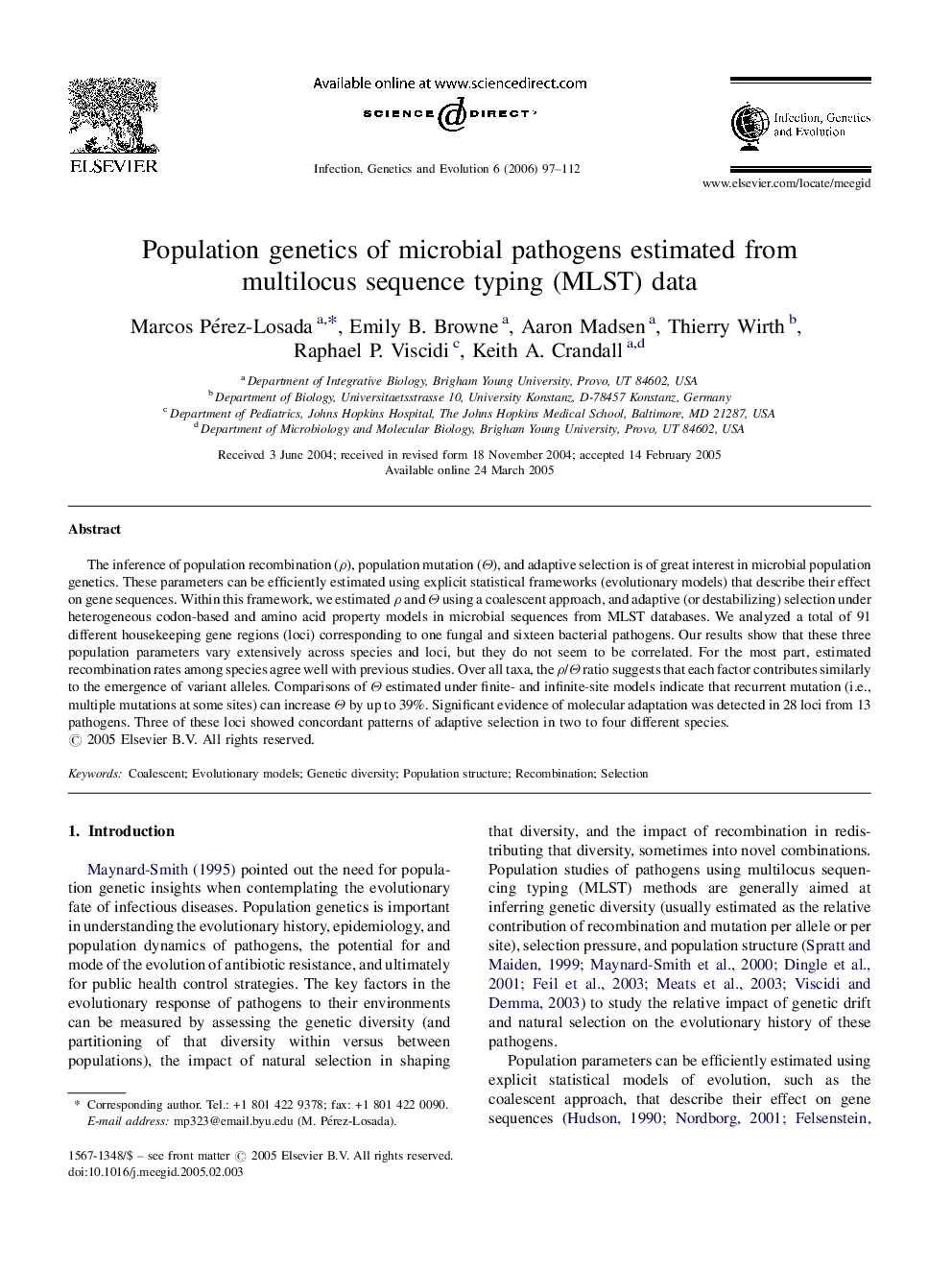| Article ID | Journal | Published Year | Pages | File Type |
|---|---|---|---|---|
| 2823740 | Infection, Genetics and Evolution | 2006 | 16 Pages |
The inference of population recombination (ρ), population mutation (Θ), and adaptive selection is of great interest in microbial population genetics. These parameters can be efficiently estimated using explicit statistical frameworks (evolutionary models) that describe their effect on gene sequences. Within this framework, we estimated ρ and Θ using a coalescent approach, and adaptive (or destabilizing) selection under heterogeneous codon-based and amino acid property models in microbial sequences from MLST databases. We analyzed a total of 91 different housekeeping gene regions (loci) corresponding to one fungal and sixteen bacterial pathogens. Our results show that these three population parameters vary extensively across species and loci, but they do not seem to be correlated. For the most part, estimated recombination rates among species agree well with previous studies. Over all taxa, the ρ/Θ ratio suggests that each factor contributes similarly to the emergence of variant alleles. Comparisons of Θ estimated under finite- and infinite-site models indicate that recurrent mutation (i.e., multiple mutations at some sites) can increase Θ by up to 39%. Significant evidence of molecular adaptation was detected in 28 loci from 13 pathogens. Three of these loci showed concordant patterns of adaptive selection in two to four different species.
